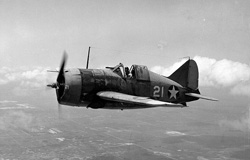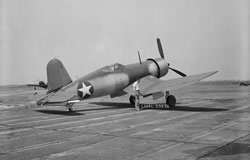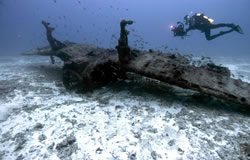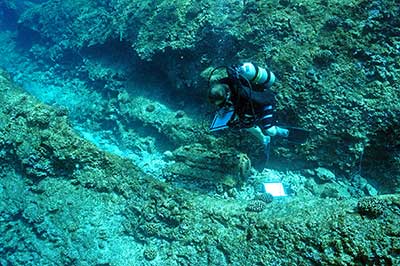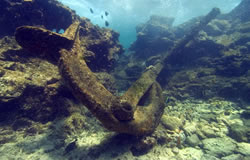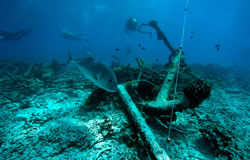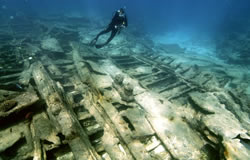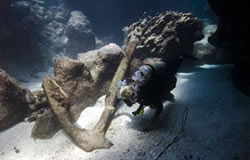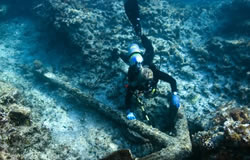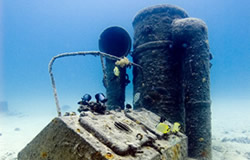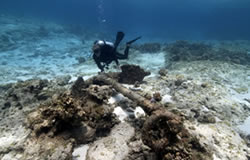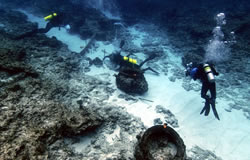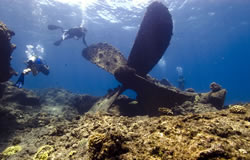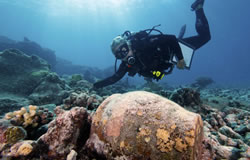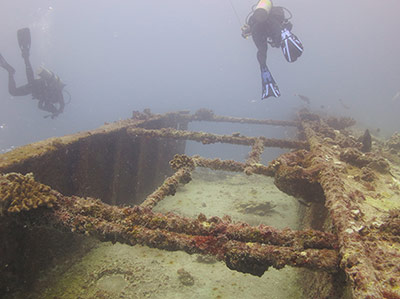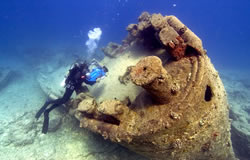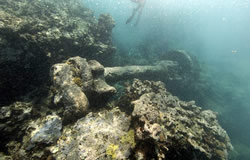Maritime Heritage
Wrecks
Aircraft
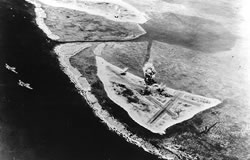
At least 67 naval aircraft are recorded as being lost in the vicinity of the NWHI. World War II played a large role in these losses. The Navy built a Naval Air Facility at Midway Atoll beginning in 1940; Eastern Island had the main airfield in the early days of the war and the submarine and seaplane support operations were concentrated on Sand Island. This was a vital center for submarine, surface and aviation operations. Initially, the Hawaiian Sea Frontier forces stationed patrol vessels at most of the islands and atolls. Midway was also the focus of one of the most important naval battles in the Pacific. The Battle of Midway took place from June 4-7, 1942 and is considered the turning point of the war in the Pacific. The majority of the sea battle took place beyond the NWHI between 100 to 200 miles to the north, but an intense air fight was waged directly over and around the atoll itself. Numerous Japanese and American planes splashed down into Midway waters. Many of these sites are war graves. Training exercises before and after the battle also took their toll.
Shipwrecks
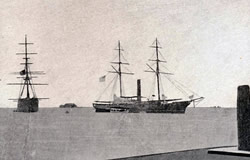
Papahānaumokuākea possesses a rich maritime heritage stretching back many centuries. Native Hawaiian chants and oral histories tell of navigational knowledge developed over millennia, while shipwreck sites scattered throughout Papahānaumokuākea help tell the story of a more recent maritime past.
Many sailors successfully navigated their way through these remote, low lying atolls. However, these atolls also meant tragedy and danger for sailors on the 60 shipwrecks reported lost in the Northwestern Hawaiian Islands, the earliest dating back to 1818. The Pearl and the Hermes, the earliest shipwrecks discovered to date, were lost on the same night in 1822 at the atoll that now bears their name. To date, seventeen of these shipwreck sites have been discovered and documented by NOAA maritime archaeologists. Exploration for the remaining shipwreck sites in the Northwestern Hawaiian Islands continues.




